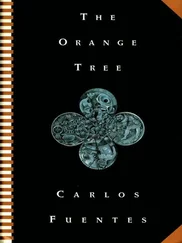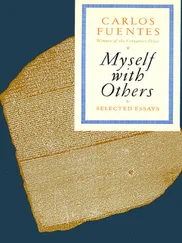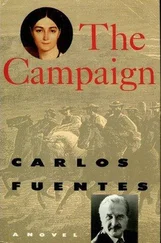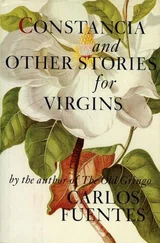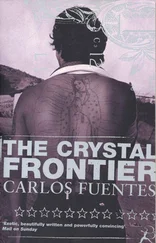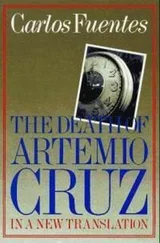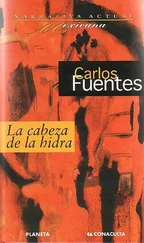“Why don’t we women spit?”
Then they filed out of the dining room and wordlessly said goodbye to Laura, and she would vainly try to attribute the ideas she’d heard to the faces she watched pass — this one with sunken eyes (Pánfilo?), that one with a nose as narrow as the gates of heaven (José Miguel?), the sunny look of one (Dionisio?), the blind stumbling of another (Palomo?), the whole group and all the details about these men, the dissimulated limping, the desire to weep for some loved one, the salty saliva, the last cold, the ancient passage of hours remembered because they never took place, youth wanting to be more than youth all at once, eyes mortgaged with blood, loves postponed, the handful of dead men, the longed-for generations, hopelessness without power, life exalted without the need for happiness, a parade of promises, crumbs on shirts, a strand of white hair on a lapel, a remnant of breakfast’s scrambled eggs on a lip, the haste to return to what had been abandoned, delay in order to avoid return — Laura saw all that as her husband’s comrades passed by.
No one was smiling, and that alarmed her. Wasn’t Juan Francisco right? Was it she who didn’t understand anything? She wanted to give words to the faces leaving her house, saying farewell wordlessly. She was upset, actually came to feel guilty for wanting reasons where perhaps there were only dreams and desires.
She liked President Obregón. He was astute, intelligent, even though he didn’t seem as handsome as he had in the battle photos, or as blond, young, and svelte as when he had fought with two arms; now, maimed and graying, he’d put on weight, as if he weren’t getting enough exercise or the presidential sash didn’t quite compensate for the lost hand. But as she strolled through the parks in the morning, before the cloudbursts, with the boys in the pram, Laura felt something new was happening. José Vasconcelos, an overexcited but brilliant philosopher, was the revolutionary government’s first Minister of Education, and he had turned over the walls of public buildings to artists to paint what they pleased — attacks on the clergy, the bourgeoisie, the Holy Trinity, or, rather worse, the very government that was paying for their labor. There was freedom! Laura exclaimed to herself — taking advantage of her aunt’s minding the boys to make an excursion to the National Preparatory School, where Orozco was painting, or to the National Palace, where Rivera was painting.
Like Obregón, Orozco too was one-armed, as well as nearsighted and sad. Laura admired him because he painted the walls in the Prepa as if he were someone else, with a vigorous hand and his eyes unblinkingly fixed on the sun: he painted with what he lacked. An unclouded vision, another Orozco inhabiting the body of this Orozco, guided him, illuminated him, challenged Laura Díaz to imagine what the fiery, fugitive genius must be that governed the painter’s body, communicating an invisible fire to the disabled, shortsighted artist with his severe lips and bitter brow.
By contrast, Laura in her new outfit, with its bodice embroidered with precious stones and its short skirt, had barely sat down on the stairway in the National Palace to watch Diego Rivera paint when the artist became distracted, staring at her with an intensity that made her blush.
“You’ve got the face of a boy or a madonna. I don’t know which. You choose. Who are you?” asked Rivera during a break.
“I’m a girl.” Laura smiled. “And I have two sons.”
“I’ve got two girls. Let’s marry off the four of them, and when we’re both free of brats I’ll paint you as neither a woman nor a man but a hermaphrodite. Do you realize what the advantage is? You can love yourself both ways.”
He was the opposite of Orozco. He was an immense, fat, tall frog with bulging, sleepy eyes. And when she turned up another day dressed in black with a black ribbon tied over her hair because of the death of her father, Fernando D  az, in Xalapa, one of Rivera’s assistants asked her to leave: the maestro feared the evil eye and couldn’t paint while making the sign of the horns to exorcise bad luck.
az, in Xalapa, one of Rivera’s assistants asked her to leave: the maestro feared the evil eye and couldn’t paint while making the sign of the horns to exorcise bad luck.
“Oh, I see … because I’m in mourning. You must be very superstitious, red maestro, if a woman in black can frighten you.”
She hadn’t had time to get to Xalapa for the funeral. Her mother, Leticia, sent her a telegram. You have your own obligations, Laura, a husband and two sons. Don’t make the trip. Why didn’t she add anything else, your father thought of you before dying, said your name, regained his speech for the last time just to say Laura, God gave him that gift at the end, he spoke again?
“He was a decent man, Laura,” said Juan Francisco. “You know how he helped us.”
“He did it for Santiago’s sake,” Laura retorted, the telegram in one hand and the other pushing aside the curtain so she could peer out through the almost black rain of late afternoon, as if to see all the way to a cemetery in Xalapa. The snowy peaks of Mexico City’s two volcanoes were bobbing above the storm.
When Aunt María de la O came home, she said that God knew what He was doing, Fernando D  az wanted to die in order not to be in the way, she knew this because the two of them understood each other clearly, with just a look, direct and intelligent, how could it be otherwise with the man who had saved her mother, supported her, and given her a dignified old age.
az wanted to die in order not to be in the way, she knew this because the two of them understood each other clearly, with just a look, direct and intelligent, how could it be otherwise with the man who had saved her mother, supported her, and given her a dignified old age.
“Is your mother still alive?”
María de la O became upset, shook her head, said I don’t know, I don’t know, but one morning when Laura stayed home to make the beds and the aunt took the boy and the baby in the carriage out for a stroll, she found under María de la O’s mattress an old daguerreotype of a slim, good-looking black woman in a low-cut dress, with a spark on her lips, a challenge in her eyes, a wasp waist, and breasts like hard melons. She quickly put it back when she heard María de la O return, tired after only three blocks, hobbling on her swollen ankles.
“Oooh, the altitude here, Laurita.”
The altitude and its airless air. The rain and its refreshing air. It was like the beat of Mexico’s heart, sun and rain, rain and sun, systole and diastole, every day. Thank heaven the nights were rainy and the days clear. On weekends, Xavier Icaza would visit and teach them how to drive the Ford that the CROM had given Juan Francisco.
Laura turned out to be a better driver than her oversized, awkward husband, who almost didn’t fit in the seat and had no place to put his knees. She seemed to have an instinctive talent for driving and could now take the boys on excursions to Xochimilco to see the canals, to Tenayuca to see the pyramid, and to wander around the barns at Milpa Alta and smell that unique aroma of udders and straw and moist backs and drink warm milk fresh from the cow.
One day, ducking out of the rain after she’d left the National Palace (where Rivera had readmitted her as soon as she stopped wearing mourning), Laura took the car parked on Calle de La Moneda and drove down the recently rebaptized Avenida Madero, the former Calle de Plateros, admiring as she went the colonial mansions along it, with their fiery tezontle tiles and matte marble, and then to Alameda and Paseo de la Reforma, where the architecture became frenchified, where beautiful villas had high mansard roofs and formal gardens.
A feeling of comfort settled over her. Her life as a married woman was comfortable, satisfactory, she had two handsome sons and an extraordinary husband — difficult at times because he was an honest man with character, a man who wouldn’t give in, but an always loving man, preoccupied, burdened by his work, but who created no problems for her. As she maneuvered to the left at the Niza traffic circle to make her way to Avenida de los Insurgentes and her house on Avenida Sonora, her comfort began to discomfit her. Everything was too calm, too good, something had to happen …
Читать дальше
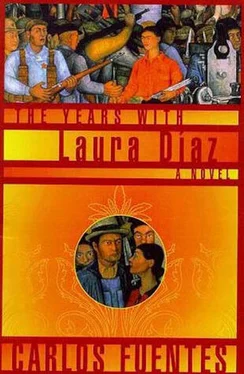
 az, in Xalapa, one of Rivera’s assistants asked her to leave: the maestro feared the evil eye and couldn’t paint while making the sign of the horns to exorcise bad luck.
az, in Xalapa, one of Rivera’s assistants asked her to leave: the maestro feared the evil eye and couldn’t paint while making the sign of the horns to exorcise bad luck.